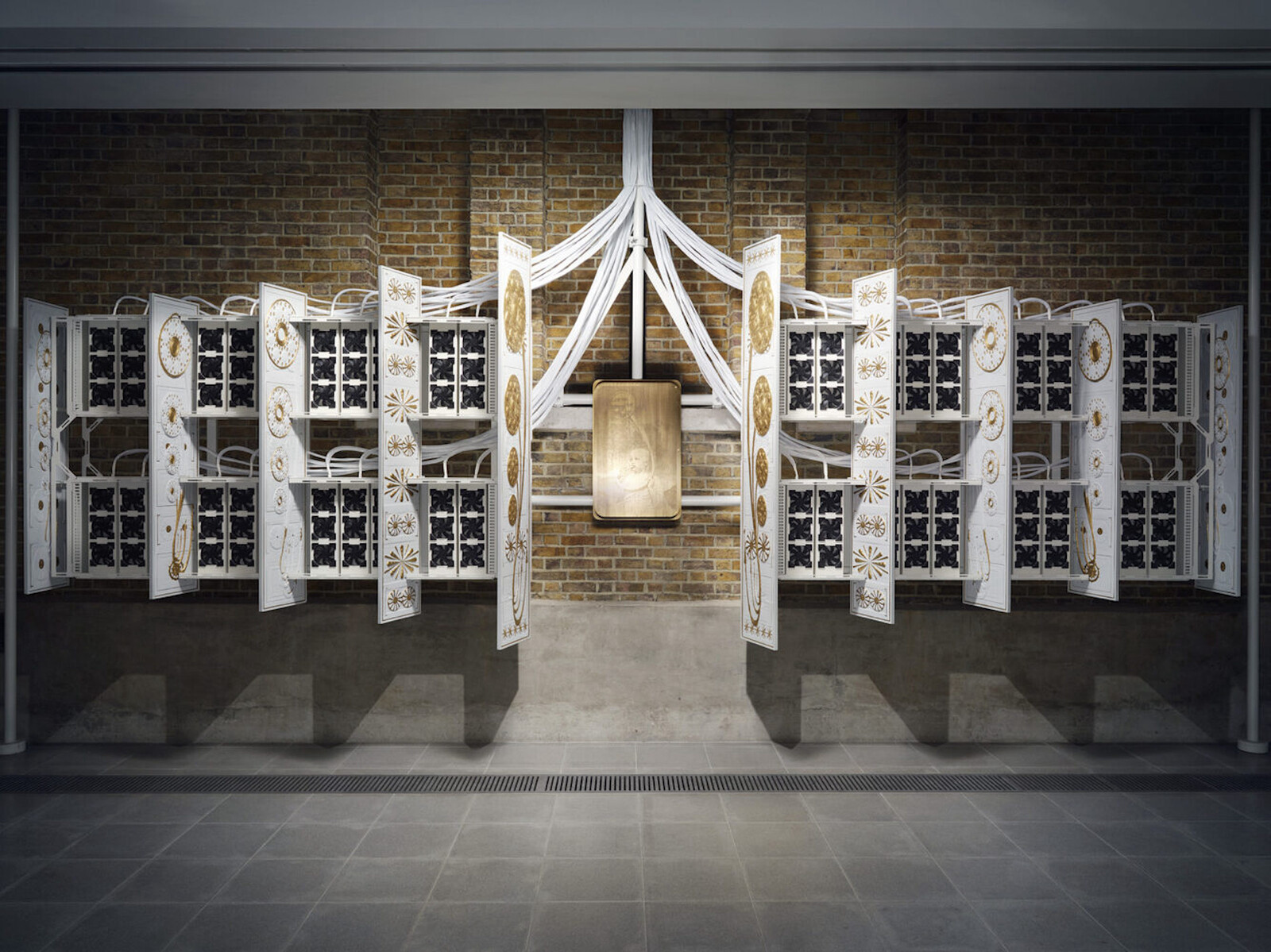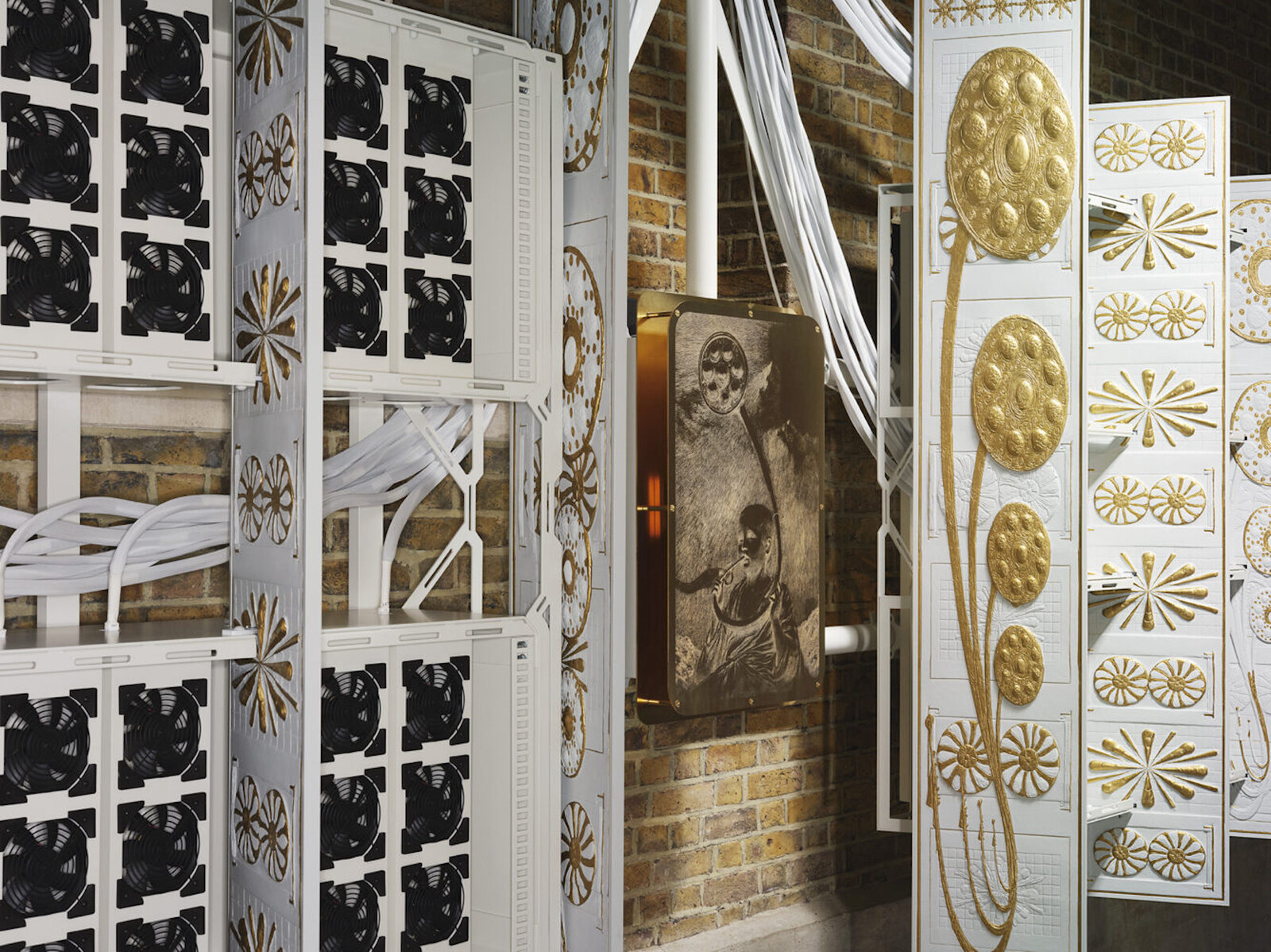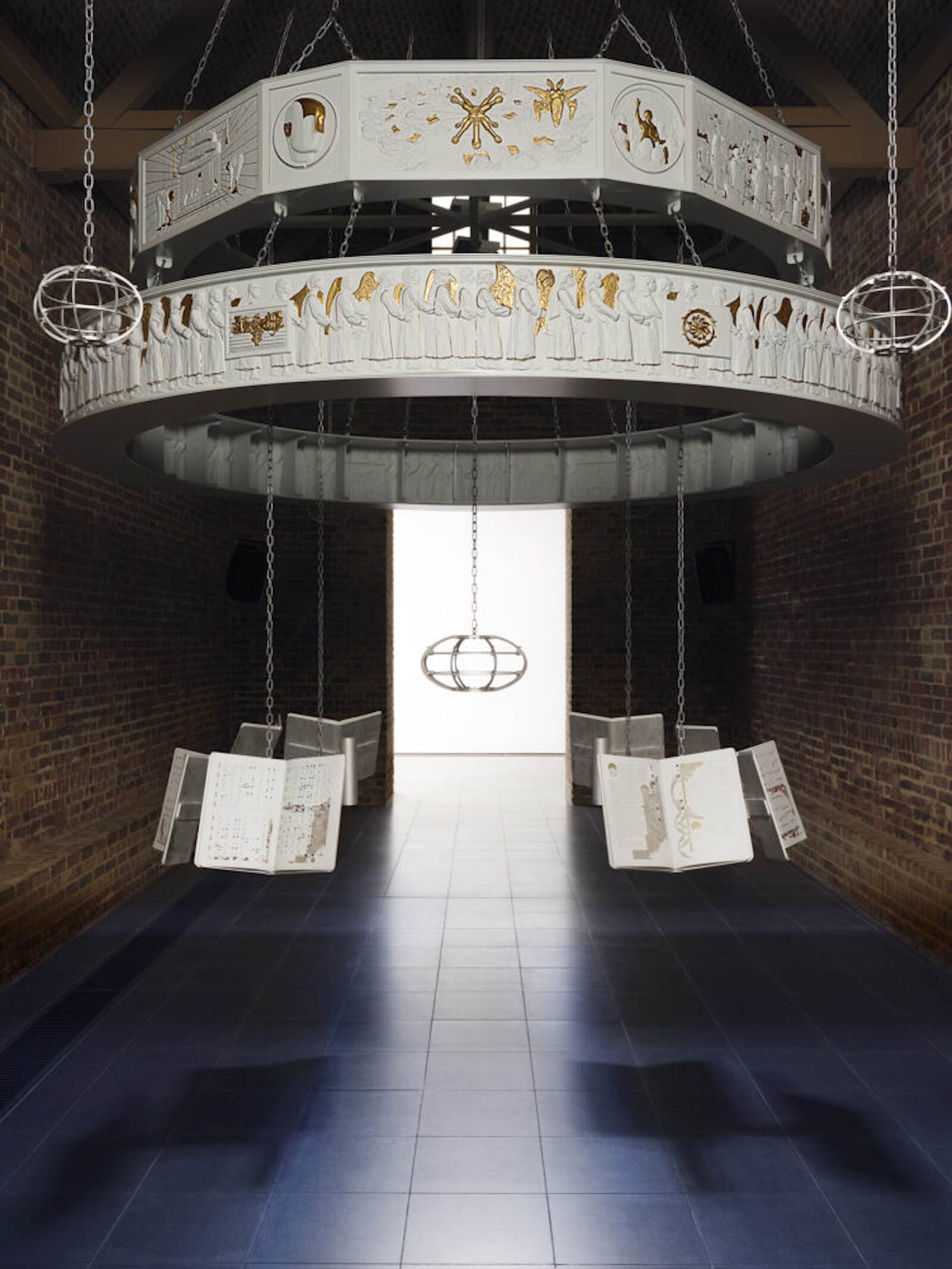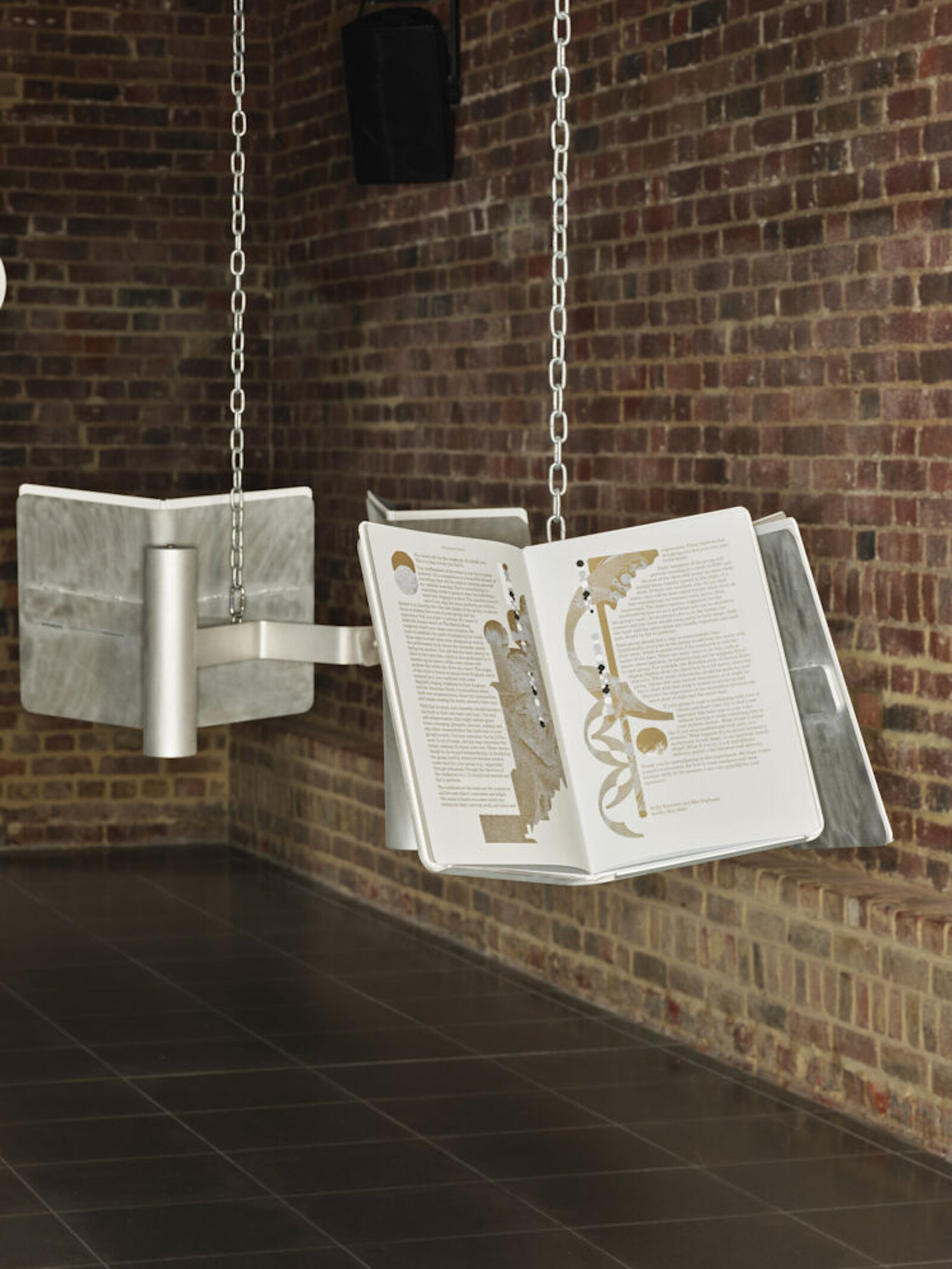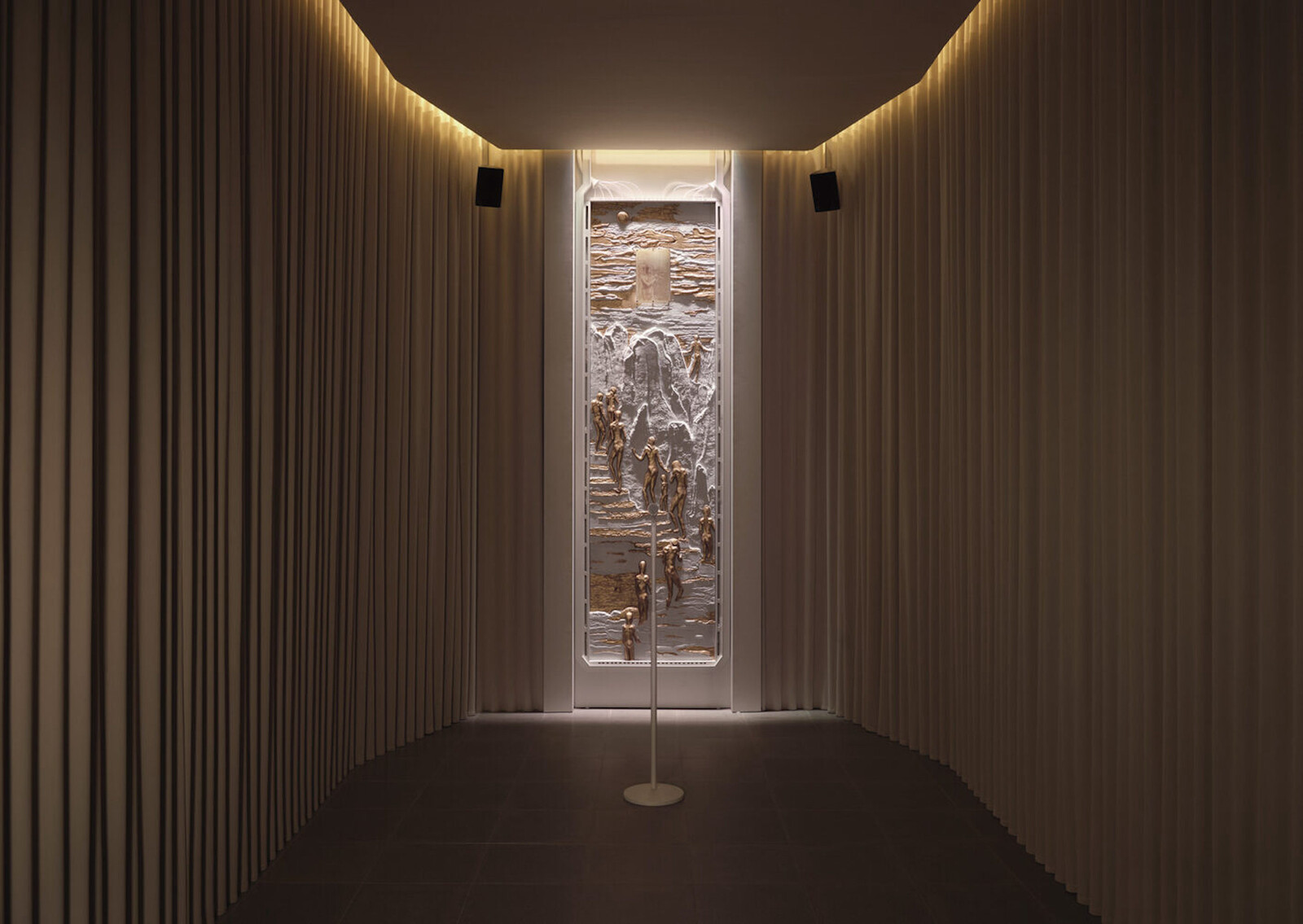Holly Herndon and Mat Dryhurst have in recent years been better known as spokespeople for the artistic possibilities of AI than as demonstrators of its uses. Numerous media profiles, their Interdependence podcast, and Dryhurst’s busy X account mean it has been easier to learn their opinions on AI than to engage with—and sometimes understand—the various tools, songs, images, and other experiments that the music/artist/research duo have produced.
Herndon and Dryhurst are both eloquent advocates for open-minded but certainly not uncritical engagements with AI for artistic practices and, by extension, its broader sociocultural impacts. They confidently tread the (admittedly very broad) ground between AI doomers, denialists, and Big Tech-boosters, with a particular focus on the ethical use of artists’ work to produce AI models—as seen in projects such as the website Have I been Trained?, which allows artists and photographers to find out if their work has been used to train AI models. And yet, approaching “The Call,” the duo’s first solo exhibition, at London’s Serpentine Gallery, I had little sense of what “art” awaited me and, I must admit, feared diagrams of neural networks were ahead.
Greeting visitors to Serpentine North is The Hearth (all works 2024), a wall-mounted instrument consisting of computer fans and a brass plate symmetrically arranged to mimic an altar. The show is surprisingly simple, with four works across four rooms: alongside The Hearth is The Wheel (a chandelier-like structure surrounded by music stands holding songbooks); The Oratory (where visitors are encouraged to sing into a microphone, triggering an AI model to harmonize in response, in front of another altar-like object); and, reverberating around the edges of the gallery space, a series of ethereal musical compositions called “Linked Diffusion.”
At the conceptual center of the project is the choir—the artists provocatively call it “one of our oldest coordination technologies”—which serves as a smart, if loose, analogy for artificial intelligence: the voices of individual singers are like data points that collectively build an AI model, or a choral song. To produce the works in “The Call,” Herndon and Dryhurst developed a songbook of “hymns” and travelled the UK to record fifteen choirs performing them. Recordings were then used as the dataset for the artists’ choral AI model heard around the gallery, played by the computer fans rotating at different speeds in The Hearth and singing back to me in The Oratory.
A lesser exhibition may have allowed this broader context and process narrative to have got in the way—or become the entire point—of the objects in the gallery. It is a credit to Herndon and Dryhurst, as well as curator Eva Jäger and the broader Serpentine Arts Technologies programme, that “The Call” is best enjoyed as a sensory experience rather than an overly intellectual or instructional one. This is no doubt helped by well-chosen collaborators on the project who bring compelling material forms and detailed scenography, to the affair.
Sub, a group of architects best known for their set design collaborations with Balenciaga and Travis Scott, are responsible for the show’s sculptural moments. The songbooks that hang from The Wheel, meanwhile, are designed by the artists’ frequent graphic design collaborator, Michael Oswell. With their flashes of color, unusual scoring symbols, and unfurling geometric patterns, they are at once glitchy and Gregorian. The white circular two-tiered hanging object is completed with brass gilded panels depicting scenes and iconography from the choirs’ recording process, as well as more mythological embellishments, such as winged figures. Its steel structure, chain connections and the finely detailed panels give the piece a solidity, even an authenticity, which, combined with the songbooks, has a performative impact on the gallery itself. No longer just a container for the works, the room seems transformed by its hanging objects into an expectant place that awaits its next ensemble like an empty church; visually busy with its ornamental windows and friezes, but quiet and incomplete without its congregation.
With The Hearth’s altar-like symmetry, the engraved pictorial panels and, of course, the choral music, the ecclesiastical atmosphere of “The Call” is explicit. Yet any sense that the piece might be satirizing the messianic tones of some AI discourse is undermined by the infectious sincerity of the works. The installations also bring secular spaces to mind: the decorative arts of the British halls in which the participating choirs might practice, but also early-twentieth century muralism, across the Americas, through which folk traditions and working-class cultures were memorialized and aestheticized in exercises of optimistic nation-building. Tapping into these histories of spiritual and civic transcendence, Herndon and Dryhurst compel us briefly to consider AI not as a tool of extraction or even disruption, but as a collaborative effort and a source of something beautiful.

